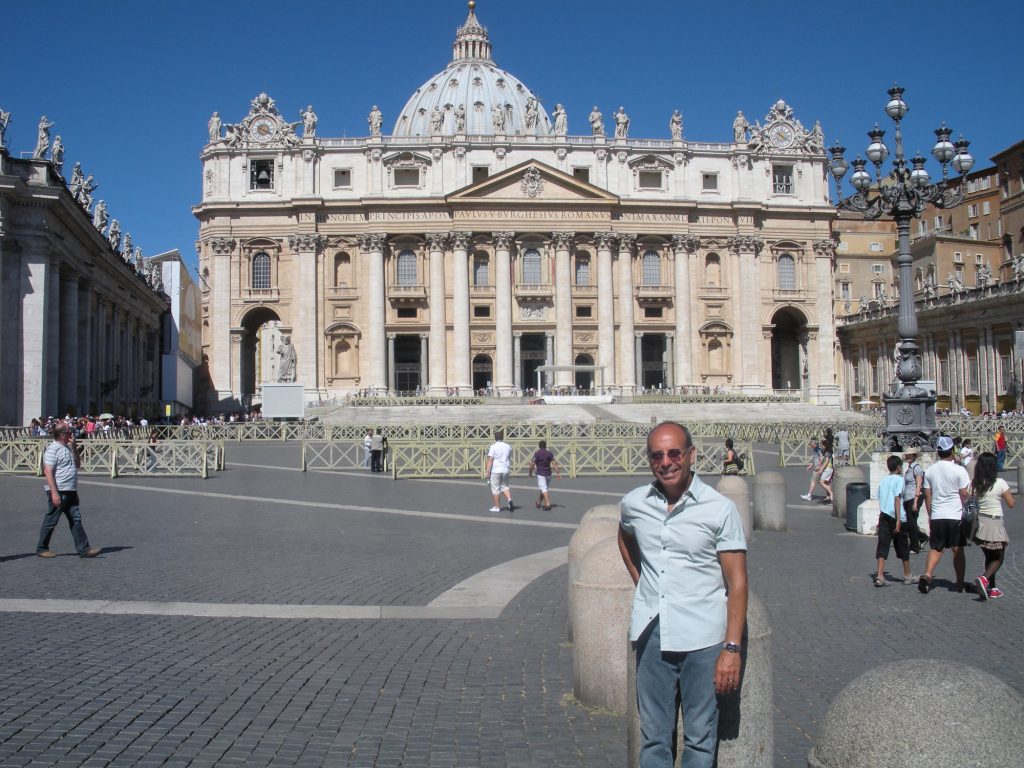Last Updated on October 22, 2016 by Editor
Almost every evening, as we watch the world news, we hear of conflicts within the Muslim faith between Sunnis and Shiites.
It may be puzzling to westerners how one faith can be fractured between its adherents.
For the record, historically, upon the death of Muhammad in 632 AD, the Sunnis chose Abu Bakr, the prophet’s adviser, to become the first successor, or caliph, to lead the Muslim state. The Shiites favored Ali, Muhammad’s cousin and son-in-law. Ali and his successors are called imams; they are considered to be descendants of Muhammad.
There are some differences between the two groups in their interpretation of Islamic law. Shiites honor Muslim saints but Sunnis do not. Saudi Arabia is predominantly Sunni, while Iran is predominantly Shiite. The two powerhouses do not get along.
To the casual observer this doesn’t seem to be enough to trigger the bloody scenes we see from the comfort of our living rooms. But if we look to our Christian past we can see division and conflict as well.
The world looks upon Christianity as a collection of several faiths, the largest of which is Roman Catholic, that believe in a common savior. We are Catholics, Protestants and Orthodox. There are many contributing factors to the rise of Protestant communities from the 16th century on, but the oldest division is that between Catholicism and Orthodoxy.
In its infancy the “church” existed as nascent communities founded by Christ’s apostles around the Mediterranean and to the East. By the 5th century, these communities were organized under five patriarchates: Rome, Constantinople, Alexandria, Antioch and Jerusalem.
That of Rome, founded by Sts. Peter and Paul, was considered first among equals. In the 4th century, the Roman emperor Constantine moved his capital from Rome to Constantinople, and with that a rift for dominance in leadership in the church began.
Over the next 600 years, several contributing factors led to the Great Schism of 1054. Rome lost its political power, and due to invasions from Western Europe it was weakened even more. Islam began to take hold, toppling the patriarchates of Alexandria, Antioch and Jerusalem.
The patriarch of Constantinople centralized power becoming the sole patriarch of the East. The move was seen as a conflict of sovereignty. The pope based his claim to leadership as the successor to Peter (“And I tell you that you are Peter, and on this rock I will build my church, and the gates of Hades will not overcome it.” – Matthew 16:18).
The Church of Rome made interpretations of dogma to which Constantinople objected because it never was allowed input. The Catholics sees the Trinity as a unity of essence. The Orthodox explain the Trinity as three distinct persons. There also are disagreements as to the perpetual virginity of Mary and the nature of original sin. In the 9th century, Rome objected to the elevation of the Byzantine emperor to the position of patriarch of Constantinople.
The Roman Church used Latin, while the Orthodox used Greek. This created many conflicts because some words don’t translate well from one language to the other and nuances that the clergy held dear were misinterpreted.
The most egregious conflict between the factions occurred after the capture and sacking of Constantinople during the Fourth Crusade of 1204. The Catholic westerners sacked the Church of Holy Wisdom (the mosque known as Hagia Sofia today but then the equivalent to the East’s Vatican), destroyed monasteries and the great library of Constantinople. In truth, as much damage was reeked on the Crusader’s Christian brethren as on their Muslim enemies who held the Holy Land.
Souvenirs of their conquest were brought back to Europe and still decorate churches such as Venice’s St. Mark Cathedral and other churches and palaces today. In 2004, Pope John Paul II apologized to Bartholomew I, the Ecumenical Patriarch of Constantinople, saying that the plundering 800 years ago caused him “pain and disgust.”
There are several differences in the practices of the two churches today. In communion, the Orthodox use leavened bred and Catholics use unleavened bread. The Orthodox Church believes that Christ is mystically present in communion while Catholics believe the bread and wine are transformed into the body and blood of Christ. The mural over our altar is a copy of the top half of a famous fresco that depicts the discussion of exactly what the transubstantiation is.
The Orthodox Church is led by patriarchs who administer specific geographic areas. They are considered equals with none having authority over the others. The Orthodox refusal to be beholden to the will of the pope in Rome is one of the main factors in the ancient split.
Today, there are about 1.18 billion Catholics in the world. About 60 million of those are in the USA. It is estimated that there are about 200 million Eastern Orthodox adherents, the largest group being the 100 million Russian Orthodox. The USA claims 1.5 to 3 million Orthodox.
Fortunately, in this country, we manage to get along.
A.J. VALENTINI

